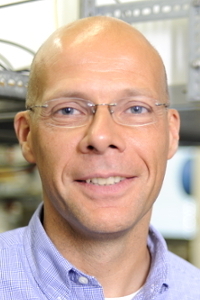"Step-changing Solar Energy Conversion Schemes at the Nanoscale" by Dirk Guldi

Abstract
At the heart of unlocking the potential of global clean, renewable energy is the concerted effort of Advanced Charge Management (ACM) and Advanced Photon Management (APM). Recent advances regarding molecular ACM have documented the maturity of energy conversion schemes. Adding now APM to ACM by means of down- and/or up-conversion and creating synergies is essential to further boost the efficiency of these sun-driven energy conversion schemes. A full-fledged comprehension of APM is essential as an enabler for creating versatile platforms that are broadly applicable not only in the area of solar electricity, but also solar fuels. APM is, in the molecular context, based on either down-converting photons by means of Singlet Fission (SF), on one-hand, or on Triplet Fusion (TF)/Two Photon Absorptions (TPA) for up-converting them, on the other hand. To harvest photons in the high-energy regime, SF, the molecular analog to multiple exciton generation, stands out. It allows high-energy, singlet-excited states to be down-converted into twice as many low-energy, triplet-excited states, thereby improving solar-cell performance. This is, however, limited to the part of the solar spectrum, where, for example, the SF-materials feature a significant absorption cross-section. To harvest photons in the low-energy regime, necessitates non-resonant, indirect excitation via TF/TPA. Our transdisciplinary research has enabled in recent years to gather a comprehensive understanding of molecular down- and up-conversion.
Biography
Dirk Guldi is a professor in the department of chemistry and pharmacy, and the chair of Physical Chemistry I, at Friedrich-Alexander University Erlangen-Nürnberg.
Seminar sponsored by the Department of Chemistry and Biochemistry.